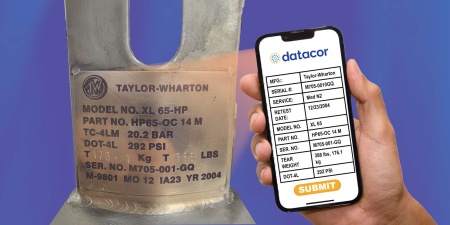Rather than selling to another company, many members are selling to their employees
Across all industries, companies are facing a generational shift that is impacting their entire organizations. As C-suite executives and owners reach retirement age, they are faced with a question of what to do with the business. At the Seven Springs Regional Meeting, Meritus Vice Chairman Rob D’Allesandro laid out what he describes as the five alternatives to selling the business outright, ranking them on a spectrum from staying independent to an outright sale. Those options included an Enhanced Supply Relationship, a Joint Venture with another Distributor, an Employee Stock Ownership Plan, a Partnership with an Equity Sponsor/Partner, and an Outright Sale.
In recent years, an increasingly popular option is the ESOP. One of the reasons ESOPs have become so popular is that owners may worry about what will happen to their employees under new ownership, if they choose to sell the business in order to retire. In an ESOP, those employees now become part of the ownership group, giving them a stake in the success of the business and the company a potential recruiting and retention competitive advantage.
ESOPs are especially attractive to companies who may not have an in-house successor who is prepared to step into a leadership role or may not be financially able to purchase the company from the retiring owner. Such was the case when Oxygen Service Company’s original owners were set to retire in the early 90s.
“Our two original owners were Bill Lund and Bill Huber,” says Oxygen Service Company President Ryan Diekow. “One of the decisions they made as business partners was not to bring family into the business. So, when they got to the point of retirement, they were at a bit of a crossroads. Do they sell to one of the large distributors out there, or do they go down this employee ownership road? They decided to actually take less for their business but reward the folks who had been loyal to them and helped them build the business over the years. It was an exciting opportunity for us, as employees. And it’s exciting because Bill Lund still comes around the business today. He’s extremely proud to still be associated with Oxygen Service and to leave the employee ownership legacy.
Attractive Business Qualities
According to an article from Rivero, Gordimer & Company CPAs and Advisors, there are several qualities to help owners determine if an ESOP could be the ideal exit solution. This list includes:
- Company has strong cash flow
- Company has a history of increasing sales and profits
- Company is in a high federal income tax bracket
- Company is not heavily leveraged and has substantial stockholder equity
- Company has capable second-line management in place
- Company has 30 or more employees
- Company has more than $5 million in annual sales.
The article goes on to say, “In addition to analyzing the financial aspects of an ESOP as an exit strategy, it’s also important to consider the employees. Proponents of employee ownership emphasize the incentive and team-building advantages of paying employees in part with employer stock. Critics argue that concentrating employees’ financial resources in their employer’s securities increases their exposure to their employer’s fortunes. The future success of the company will be partly dependent on the employee culture and mindset.
The ESOP Association performed a study of its members and found that most of its members reported increased productivity and improved employee morale. A study by the National Center for Employee Ownership found that ESOP companies grew more than 5% a year faster than their non-ESOP counterparts.”
Employee Recruitment and Retention
Many GAWDA members have pursued a full or partial ESOPs in recent years and report being happy with the results. In the 2nd Quarter 2018 issue of Welding & Gases Today, we published an article entitled “ESOPs: As a Succession-or-Sell Option, Employee Ownership Can be a Win-Win-Win Solution.” That article spoke with multiple GAWDA members who have created full or partial ESOPs and how it has impacted their productivity and their company culture.
“I think being a 100% ESOP does give us an advantage when it comes to recruiting,” Diekow says. “One of the things that we discuss, especially when it comes to our younger employees, is we’ve gone away from calling it a retirement benefit to calling it a wealth-building tool. A lot of folks, especially younger folks, don’t see themselves with the same company for the next 30 years. We’re trying to make sure that they understand the advantage of being part of an ESOP and the tool that it is.”
General Air Service & Supply became a partial ESOP in 2007, which its website describes as “part of its secret sauce for recruiting and retaining the best in our industry.”
“The decision to form an ESOP in 2007 was really part of my dad’s transition plan, from his position of leadership to mine,” says President Brad Armstrong. “It was one that we worked on together. He wanted to recognize and honor the individuals that had had a long career with us and helped us get established. And I think he also wanted to put some stickiness in the business as we were transitioning from his leadership style to mine. And to really encourage our employees through stock gifting to hang in through the differences and the nuances. And one thing was going to stay the same, that we have our employees’ best interest in mind. The ESOP is a long-term benefit that really encourages people to stay as the stock grows in value over time.
Tom Dunn, past CEO and Owner of Cee Kay Supply, who became 49% Employee Owned in July of this year, said, “The employees have always been at the center of growth and success for Cee Kay Supply. As I explored transitioning out of ownership, the ESOP model was a great solution to preserve the brand and our family ownership legacy, while allowing future employees to directly share in the benefits of their hard work and long-term dedication.”
In the press release announcing the ESOP, Cee Kay cited statistics from the National Center for Employee Ownership, including:
- ESOP companies have higher productivity, profit margins and overall job satisfaction.
- Employees have been found to have 2.2 times as much in their retirement plans, 20% more financial assets and 53% longer median job tenure.
Other Considerations
While there are a host of potential benefits in forming an ESOP, especially as part of a transition or succession plan, there are some potential downsides to consider. According to Douglas L. Kruse, Ph.D., of The Rutgers Institute for the Study of Employee Ownership and Profit Sharing, one of these is that “rewards from individual effort are shared with other workers and the direct incentive to work hard may be weak.” However, a strong company culture can help mitigate that potential issue.
Says Diekow, “People want to be a part of something that is bigger than themselves. I think that’s one of the things that we see in an ESOP. They’re not working for an individual owner. They do feel, to a degree, that they’re working for themselves. They see the benefits of that, whether it’s through promotion of themselves of their career, or as a wealth-building tool. It’s been really good for us, not only with recruiting but also with employee retention.:
ESOPs aren’t the right path for every company. But if you’re an owner who may be looking to transition out of the business in the near future, it may be something to consider.









